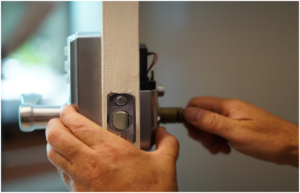334 Views
Owning a hot tub is a luxurious and rewarding experience, providing a soothing escape from the stresses of everyday life. Regular water testing is paramount to ensure that your hot tub remains a safe and enjoyable haven. In this blog post, we will explore why hot tub water testing is crucial, discuss the key parameters to monitor, and provide a step-by-step guide on how to properly test your hot tub water.
Why is Regular Hot Tub Water Testing Important?
- Water Quality Assurance: The primary reason for regular hot tub water testing is to maintain optimal water quality. Hot tub water care encompasses water testing; it allows you to monitor the chemical balance, including pH, sanitizer, and alkalinity, to ensure the water remains safe, clean, and free from harmful bacteria.
- Equipment Protection: Properly balanced hot tub water helps safeguard your equipment, including pumps, filters, and heaters. Unbalanced water can lead to corrosion, scale buildup, and damage to the equipment, resulting in costly repairs or replacements.
- User Safety: Hot tubs are communal spaces where multiple individuals enjoy relaxation benefits. Regular water testing helps ensure the safety of all users by preventing the growth of harmful bacteria and minimizing the risk of waterborne illnesses.
Key Parameters to Monitor
- pH Level: pH measures the acidity or alkalinity of the water. The ideal range for hot tubs is typically between 7.2 and 7.8. Imbalanced pH levels can cause skin and eye irritation and affect the efficiency of sanitizers.
- Sanitizer Levels: Sanitizers, such as chlorine or bromine, are essential for killing bacteria and maintaining water cleanliness. Regular testing ensures that the sanitizer levels are within the recommended range, usually 1-3 ppm for chlorine and 3-5 ppm for bromine.
- Total Alkalinity: Alkalinity acts as a buffer to stabilize the pH levels. The ideal range for total alkalinity is typically 80-120 ppm. Proper alkalinity helps prevent rapid pH fluctuations, which can affect water balance.
Step-by-Step Guide to Testing Hot Tub Water
- Step 1: Gather the necessary testing supplies, including a reliable water testing kit or test strips.
- Step 2: Rinse a clean container with hot tub water to collect a sample for testing.
- Step 3: Follow the instructions with your test kit or strips to perform the required tests.
- Step 4: Compare the results obtained from the tests with the recommended ranges for pH, sanitizer levels, alkalinity, and calcium hardness.
- Step 5:Adjust the water chemistry as necessary based on the test results. Add appropriate chemicals in small increments and retest the water until the desired levels are achieved.
- Step 6: Keep a log of the test results and chemical adjustments for future reference.
- Step 7: Repeat the testing process at regular intervals, typically weekly, or as recommended by the manufacturer or a water care professional.
Water testing: The core to hot tub water care
Regular hot tub water testing is a vital aspect of ownership that should not be overlooked. By monitoring key parameters such as pH, sanitizer levels, alkalinity, and calcium hardness, you can ensure optimal water quality, protect your equipment, and maintaina safe and enjoyable hot tub experience for all users.




